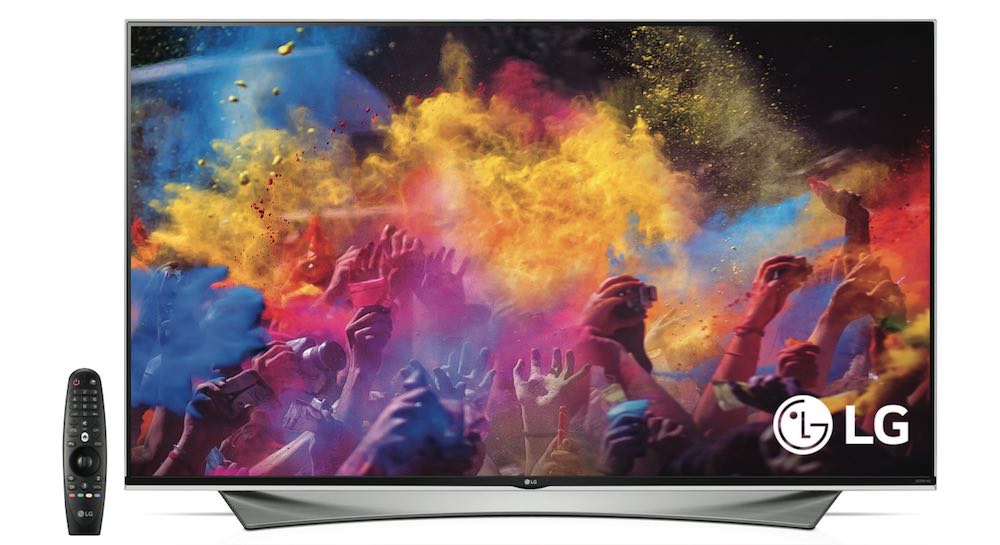 At , quantum dot technology was touted a big thing in TV technology for 2015. Although quantum dot TV technology has been around for a few years, it hasn’t really been produced in TVs yet. LG is about to release a couple of new 4K UHD models, one of which is a quantum dot TV. What was great is that I got to test them out side-by-side and see the difference. Both models were excellent sets with extremely clear pictures as you would expect with 4K sets, but the UF9500 with quantum dot technology did have better colour due to the wider colour gamut that comes with this technology.
At , quantum dot technology was touted a big thing in TV technology for 2015. Although quantum dot TV technology has been around for a few years, it hasn’t really been produced in TVs yet. LG is about to release a couple of new 4K UHD models, one of which is a quantum dot TV. What was great is that I got to test them out side-by-side and see the difference. Both models were excellent sets with extremely clear pictures as you would expect with 4K sets, but the UF9500 with quantum dot technology did have better colour due to the wider colour gamut that comes with this technology.
Quantum dot technology is sort of LED’s answer to OLED technology. One of the advantages of OLED is the wide colour spectrum available that provides their picture with extremely rich colour and deep black levels. In fact, one of LG’s models last year, the 55EC9300, was touted as “the best picture ever” by a few TV critics like CNet. Quantum dot technology works by using tiny crystals that can generate very vivid colours with a much wider colour spectrum than normal LED TVs. For more information on quantum dots have a look at Lucy’s post explaining the technology in a lot more detail.
Both the UF8500 and the UF9500 have a lot of similarities in terms of technologies and features, but the UF9500 is the higher-end unit of the two with a few additional features that make it stand out even a little bit more.
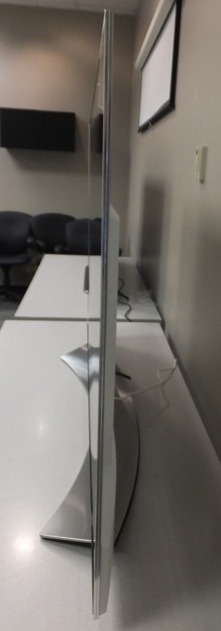
Design
I had the luxury of reviewing a 65” unit of each so the comparisons in design and picture quality were easier to make. The UF9500 only comes in 65” or 79” sizes, while the UF8500 comes in 55”, 60”, and 65” sizes. Both are very attractive looking TVs, even before you turn them on. Their big screens literally fill up the entire display area, as their bezels are very thin, especially relative to the size of the screen. They both have decent looking stands, but with such a big TV I would highly recommend mounting it on the wall (please see my recent post on TV mount safety).
Both TVs have amazingly thin screens, although by necessity they become much thicker nearer the bottom of the screen in order to house the electronics and the speakers. They come with “magic remotes” (more on that later), which you would use most if not all of the time, but both TVs also have manual controls that are hard to find at first because they are located under the front panel in the middle. The manual control is essentially a joystick that you can use to control all its primary functions. I am not a big fan of these as they are a little awkward to use, but it is nice to at least have the ability to control the TV when you can’t find your remote.
The UF9500, being a premium set over the UF8500, has a few finishes that make it look a little more elegant. For instance, the stand is a more substantial silver base with a more artistic design. The rear of the TV has a smooth white finish that makes it look a bit higher-end than the normal black finish on the UF8500. Also the thin bezel on the 8500 is black with some silver on the bottom, whereas the 9500 has a thin silver with a black line all around.
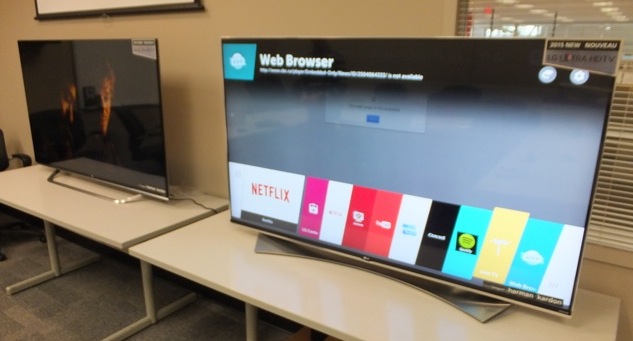 Picture Quality
Picture Quality
This is where both these TVs really shine, particularly the UF9500. The technology foundation for both of these TVs are fundamentally the same: 4K Ultra HD resolution for extremely high clarity; IPS panels for additional richness and excellent viewing angles; 240 Hz Tru Motion technology to handle fast action scenes or sports with no loss of clarity; Triple XD engine that analyzes the picture to enhance the colour, contrast and clarity; and Tru-Black Control and Ultra Luminance for deep blacks as well as an excellent range of brightness for better depth. These technologies all add up to a great picture, which was evident the moment we turned them on.
The UF9500 has an additional technology that LG calls ColourPrime Nano Spectrum, which is a fancy name for quantum dot technology. ColourPrime quantum dots can deliver a much wider colour spectrum than normal LED TVs. We tested this out by watching Netflix’ Marco Polo side-by-side and even synched the two TVs so they started the show at exactly the same time. When I looked back and forth between the two sets, initially I didn’t notice much difference because I was just enjoying the clear picture quality of both sets. Then I noticed the additional colours displayed in the UF9500. The sky had more of a natural blue gradient, the costumes had a slightly richer colour, the greens of the vegetation were not only deeper but clearly had more shades of green. The additional colour spectrum available was evident particularly where there were more gradients of colour that would appear naturally – like in the sky or in foliage.
Smart TV
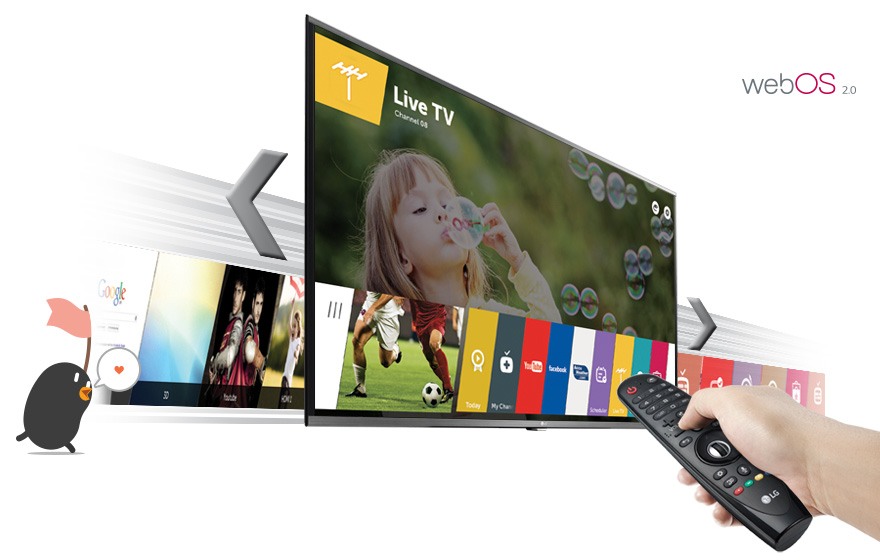
Both these Smart TVs use WebOS 2.0, a new version of LG’s WebOS Smart platform. WebOS 2.0 isn’t a major change from their previous version but LG continues to tweak this already very good platform with more improvements. I noticed right away the track-wheel on the magic remote so you can more easily scroll up or down on a page. In addition, they have added numbers to the magic remote so making channel selections is now easier as well.
Apparently, other improvements to the platform include a faster boot-up time and the ability to customize your favorite channels on the main launcher bar home screen. I never thought the platform was slow so I didn’t notice the change in boot-up speed, but I will take their word for it. Adding the favorite channel card on the main screen will also make navigation to your most watched stations quicker as well, and the nice thing is that it is totally customizable.
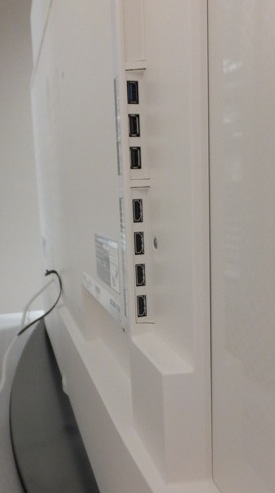 Connectivity
Connectivity
Both sets have WiFi capabilities to connect them to your home network, plus plenty of other connections. Both models have 3 HDMI inputs, while the 79” version o the UF9500 has 4. They both come with 3 USB ports, 1 of which is a USB 3.0 while the other two are USB 2.0 ports. They both have all the other standard TV connections: RF Cable, Component Video In, Composite AV In, Ethernet, and a mini jack port. These TVs also have a digital audio optical out connection, which is always nice for setting up your sound system.
Features
These new TVs are both higher-end 4K models (part of their Platinum Series) so they come loaded with just about every additional feature that you could want. For instance they are both 3D capable, with not only 2D to 3D conversion, but also 3D to 2D conversion. Using special 3D glasses, they can also be used for Dual Play gaming whereby each gamer can see only their view of the game, but on the full screen.
Another feature is one that I think is essential on all 4K sets, and that is a 4K upscaler that enhances all non-4K content to more closely approach 4K clarity. LG has also equipped these models with HEVC decoders, which enables them to playback 4K streaming content that is compressed using the HEVC protocol. HEVC stands for High-Efficiency Video Coding and is used with a lot of 4K streaming because there is so much more data required to produce 4K content it needs to be compressed.
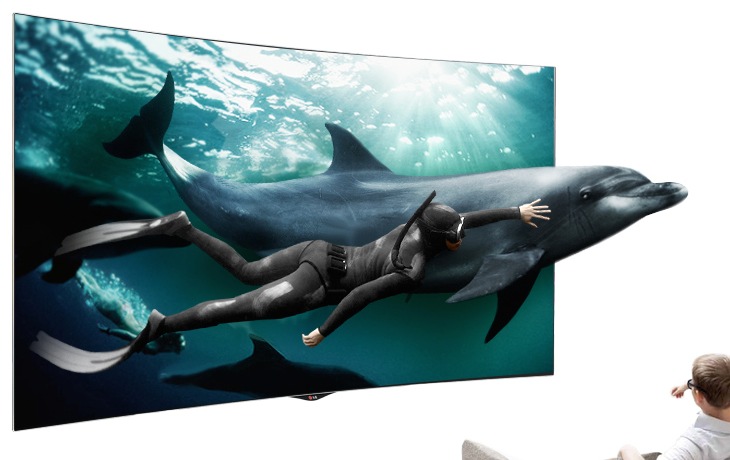
LG also tried to improve the sound system by
using Harman Kardon speakers. Although they sound fairly decent for a flat panel TV, they are still nowhere near what you will get from a decent sound bar or surround system. If you are going to invest in a high-end 4K TV like these sets, you won’t really get the full value of the experience unless you augment the sound system with some more powerful speakers that will help you feel the action while viewing it.
Both these LG 4K sets are excellent options that will be available soon. They are large sets with excellent picture quality that you cannot help but be impressed with. They have every feature you need in a TV so they easily can be the centre of you home entertainment system. The UF 9500 is a slight step up from the UF8500 mainly due to the benefit of quantum dot technology that produces a much broader colour spectrum, and one of the first big TVs out there with it.

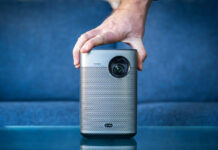


Lovely site! I am loving it!! Will come back again. I am bookmarking your feeds also
Comments are closed.